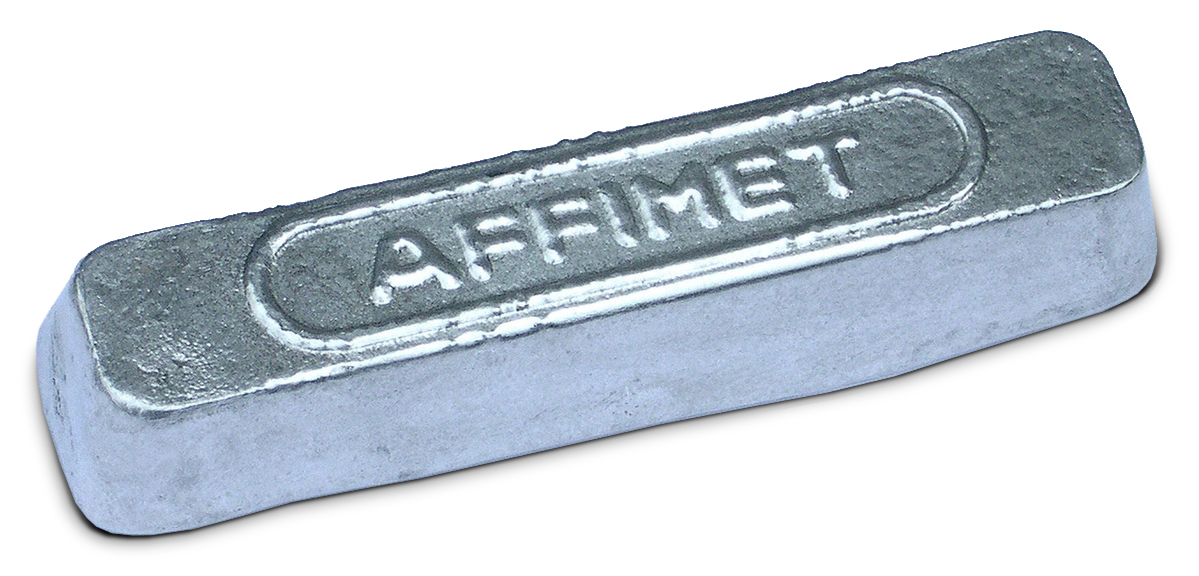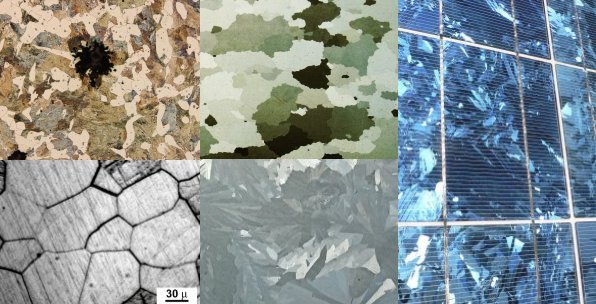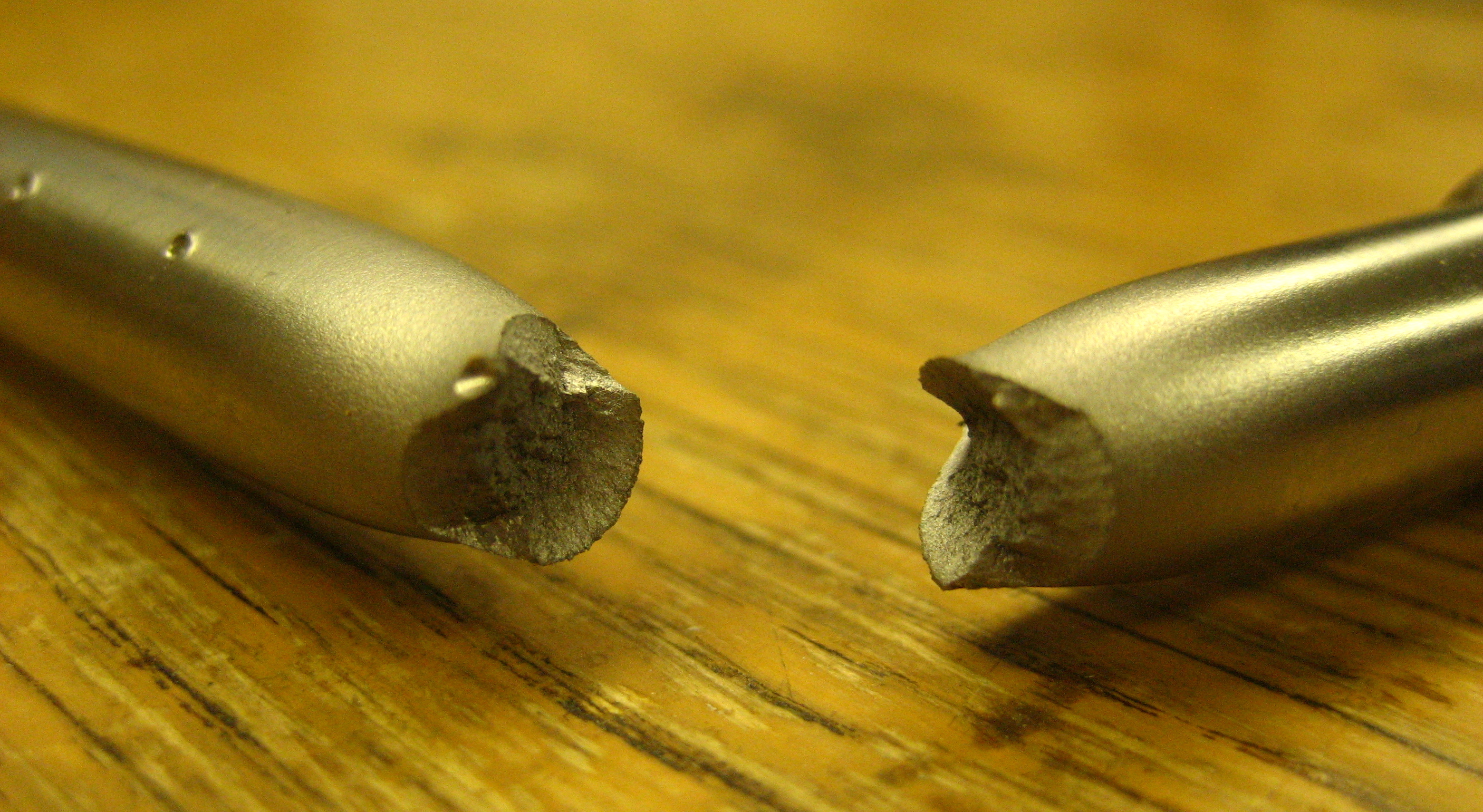|
Ingots
An ingot is a piece of relatively pure material, usually metal, that is cast into a shape suitable for further processing. In steelmaking, it is the first step among semi-finished casting products. Ingots usually require a second procedure of shaping, such as cold/hot working, cutting, or milling to produce a useful final product. Non-metallic and semiconductor materials prepared in bulk form may also be referred to as ingots, particularly when cast by mold based methods. Precious metal ingots can be used as currency (with or without being processed into other shapes), or as a currency reserve, as with gold bars. Types Ingots are generally made of metal, either pure or alloy, heated past its melting point and cast into a bar or block using a mold chill method. A special case are polycrystalline or single crystal ingots made by pulling from a molten melt. Single crystal Single crystal ingots (called boules) of materials are grown (crystal growth) using methods such as the Czoch ... [...More Info...] [...Related Items...] OR: [Wikipedia] [Google] [Baidu] |
Oxhide Ingot
Oxhide ingots are heavy (20–30 kg) metal slabs, usually of copper but sometimes of tin, produced and widely distributed during the Mediterranean Late Bronze Age (LBA). Their shape resembles the hide of an ox with a protruding handle in each of the ingot's four corners. Early thought was that each ingot was equivalent to the value of one ox. However, the similarity in shape is simply a coincidence. The ingots' producers probably designed these protrusions to make the ingots easily transportable overland on the backs of pack animals. Complete or partial oxhide ingots have been discovered in Sardinia, Crete, Peloponnese, Cyprus, Cannatello in Sicily, Boğazköy in Turkey (ancient Hattusa, the Hittite capital), Qantir in Egypt (ancient Pi-Ramesses), and Sozopol in Bulgaria. Archaeologists have recovered many oxhide ingots from two shipwrecks off the coast of Turkey (one off Uluburun and one in Cape Gelidonya). Context The appearance of oxhide ingots in the archaeological re ... [...More Info...] [...Related Items...] OR: [Wikipedia] [Google] [Baidu] |
Gold Bar
A gold bar, also known as gold bullion or a gold ingot, is a quantity of refined metallic gold that can be shaped in various forms, produced under standardized conditions of manufacture, labeling, and record-keeping. Larger varieties of gold bars, produced by casting molten metal into molds, are called ingots. Smaller bars are often created through minting or stamping from rolled gold sheets. Central banks typically hold the standard Good Delivery gold bar in their gold reserves and it is widely traded among bullion dealers. Additionally, the kilobar, weighing , and the gold bar are popular for trading and investment due to their more manageable size and weight. These bars carry a minimal premium over the spot price of gold, facilitating small transfers between banks and traders. While most kilobars have a flat appearance, a preference for brick-shaped bars exists among some investors, particularly in Europe. Types Gold bars are classified based on their production pro ... [...More Info...] [...Related Items...] OR: [Wikipedia] [Google] [Baidu] |
Solar Cell
A solar cell, also known as a photovoltaic cell (PV cell), is an electronic device that converts the energy of light directly into electricity by means of the photovoltaic effect.Solar Cells chemistryexplained.com It is a type of photoelectric cell, a device whose electrical characteristics (such as Electric current, current, voltage, or Electrical resistance and conductance, resistance) vary when it is exposed to light. Individual solar cell devices are often the electrical building blocks of solar panel, photovoltaic modules, known colloquially as "solar panels". Almost all commercial PV cells consist of crystalline silicon, with a market share of 95%. Cadmium telluride thin-film solar cells account for the remainder. The common single-junction silicon solar cell can produce a maximum open-circuit voltage o ... [...More Info...] [...Related Items...] OR: [Wikipedia] [Google] [Baidu] |
Direct Chill Casting
Direct Chill casting is a method for the fabrication of cylindrical or rectangular solid ingots from non-ferrous metals, especially Aluminum, Copper, Magnesium and their alloys. The original ingots are usually further processed by other methods (rolling, forging Forging is a manufacturing process involving the shaping of metal using localized compression (physics), compressive forces. The blows are delivered with a hammer (often a power hammer) or a die (manufacturing), die. Forging is often classif ..., etc.). More than half of global aluminum production uses the Direct Chill casting process. Direct Chill casting operates by pouring liquid metal continuously into a short mold (7.5–15 cm deep) that is open at the bottom. Only an outer layer of metal solidifies within the water-cooled mold. After leaving the closed mold at its bottom (e.g. with 5–15 cm/min), water is directly sprayed on the new ingot, continuing the solidification until complete. Only about 20% o ... [...More Info...] [...Related Items...] OR: [Wikipedia] [Google] [Baidu] |
Wafer (electronics)
In electronics, a wafer (also called a slice or substrate) is a thin slice of semiconductor, such as a crystalline silicon (c-Si, silicium), used for Semiconductor device fabrication, the fabrication of integrated circuits and, in photovoltaics, to manufacture solar cells. The wafer serves as the substrate (materials science), substrate for microelectronic devices built in and upon the wafer. It undergoes many microfabrication processes, such as doping (semiconductor), doping, ion implantation, Etching (microfabrication), etching, thin-film deposition of various materials, and Photolithography, photolithographic patterning. Finally, the individual microcircuits are separated by wafer dicing and Integrated circuit packaging, packaged as an integrated circuit. History In the semiconductor industry, the term wafer appeared in the 1950s to describe a thin round slice of semiconductor material, typically germanium or silicon. The round shape characteristic of these wafers comes f ... [...More Info...] [...Related Items...] OR: [Wikipedia] [Google] [Baidu] |
Semi-finished Casting Products
Semi-finished casting products are intermediate castings produced in a steel mill that need further processing before being finished goods. There are four types: ''ingots'', ''blooms'', ''billets'', and ''slabs''. Ingot Ingots are large rough castings designed for storage and transportation. The shape usually resembles a rectangle or square with generous fillets. They are tapered, usually with the big-end-down. Bloom In the era of commercial wrought iron, blooms were slag-riddled iron castings poured in a bloomery before being worked into wrought iron. In the era of commercial steel, blooms are intermediate-stage pieces of steel produced by a first pass of rolling (in a blooming mill) that works the ingots down to a smaller cross-sectional area, but still greater than . Blooms are usually further processed via rotary piercing, structural shape rolling and profile rolling. Common final products include structural shapes, rails, rods, and seamless pipes. Billet A bille ... [...More Info...] [...Related Items...] OR: [Wikipedia] [Google] [Baidu] |
Czochralski Process
The Czochralski method, also Czochralski technique or Czochralski process, is a method of crystal growth used to obtain single crystals (monocrystals) of semiconductors (e.g. silicon, germanium and gallium arsenide), metals (e.g. palladium, platinum, silver, gold), salts and synthetic gemstones. The method is named after Polish scientist Jan Czochralski, who invented the method in 1915 while investigating the crystallization rates of metals. He made this discovery by accident: instead of dipping his pen into his inkwell, he dipped it in molten tin, and drew a tin filament, which later proved to be a single crystal. The process remains economically important, as roughly 90% of all modern-day semiconductor devices use material derived from this method. The most important application may be the growth of large cylindrical ingots, or boules, of single crystal silicon used in the electronics industry to make semiconductor devices like integrated circuits. Other semiconductors, such ... [...More Info...] [...Related Items...] OR: [Wikipedia] [Google] [Baidu] |
Grain Structure
A crystallite is a small or even microscopic crystal which forms, for example, during the cooling of many materials. Crystallites are also referred to as grains. Bacillite is a type of crystallite. It is rodlike with parallel longulites. Structure The orientation of crystallites can be random with no preferred direction, called random texture, or directed, possibly due to growth and processing conditions. While the structure of a single crystal is highly ordered and its lattice is continuous and unbroken, amorphous materials, such as glass and many polymers, are non-crystalline and do not display any structures, as their constituents are not arranged in an ordered manner. Polycrystalline structures and paracrystalline phases are in between these two extremes. Polycrystalline materials, or polycrystals, are solids that are composed of many crystallites of varying size and orientation. Most materials are polycrystalline, made of a large number crystallites held together by ... [...More Info...] [...Related Items...] OR: [Wikipedia] [Google] [Baidu] |
Fracture
Fracture is the appearance of a crack or complete separation of an object or material into two or more pieces under the action of stress (mechanics), stress. The fracture of a solid usually occurs due to the development of certain displacement discontinuity surfaces within the solid. If a displacement develops perpendicular to the surface, it is called a normal tensile crack or simply a crack; if a displacement develops tangentially, it is called a shear crack, slip band, or dislocation. #Brittle, Brittle fractures occur without any apparent deformation before fracture. #Ductile, Ductile fractures occur after visible deformation. Fracture strength, or breaking strength, is the stress when a specimen fails or fractures. The detailed understanding of how a fracture occurs and develops in materials is the object of fracture mechanics. Strength Fracture strength, also known as breaking strength, is the stress at which a specimen structural integrity and failure, fails via fra ... [...More Info...] [...Related Items...] OR: [Wikipedia] [Google] [Baidu] |
Cast Ingot Macrostructure
Cast may refer to: Music * Cast (band), an English alternative rock band * Cast (Mexican band), a progressive Mexican rock band * The Cast, a Scottish musical duo: Mairi Campbell and Dave Francis * ''Cast'', a 2012 album by Trespassers William * ''Cast'', a 2018 album by KAT-TUN Science and technology * Casting (metalworking) ** Cast iron, a group of iron-carbon alloys * Cast (geology), a cavity formed by decomposition that once were covered by a casing material * Cast, visible piles of mineral-rich organic matter excreted above ground by earthworms * Cast of the eye, a condition in which the eyes do not properly align with each other when looking at an object * Orthopedic cast, a protective shell to hold a limb in place, for example to help in healing broken bones * Cast (computer science), to change the interpretation of a bit pattern from one data type to another in computer programming * Urinary cast, tubules found in urine * Google Cast, a protocol built into the Goog ... [...More Info...] [...Related Items...] OR: [Wikipedia] [Google] [Baidu] |
Crete
Crete ( ; , Modern Greek, Modern: , Ancient Greek, Ancient: ) is the largest and most populous of the Greek islands, the List of islands by area, 88th largest island in the world and the List of islands in the Mediterranean#By area, fifth largest island in the Mediterranean Sea, after Sicily, Sardinia, Cyprus, and Corsica. Crete is located about south of the Peloponnese, and about southwest of Anatolia. Crete has an area of and a coastline of 1,046 km (650 mi). It bounds the southern border of the Aegean Sea, with the Sea of Crete (or North Cretan Sea) to the north and the Libyan Sea (or South Cretan Sea) to the south. Crete covers 260 km from west to east but is narrow from north to south, spanning three longitudes but only half a latitude. Crete and a number of islands and islets that surround it constitute the Region of Crete (), which is the southernmost of the 13 Modern regions of Greece, top-level administrative units of Greece, and the fifth most popu ... [...More Info...] [...Related Items...] OR: [Wikipedia] [Google] [Baidu] |



